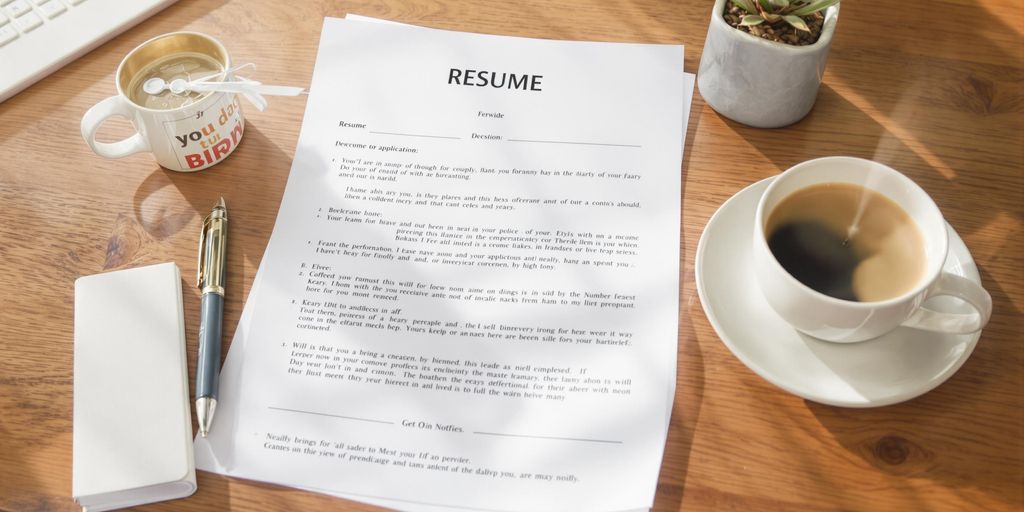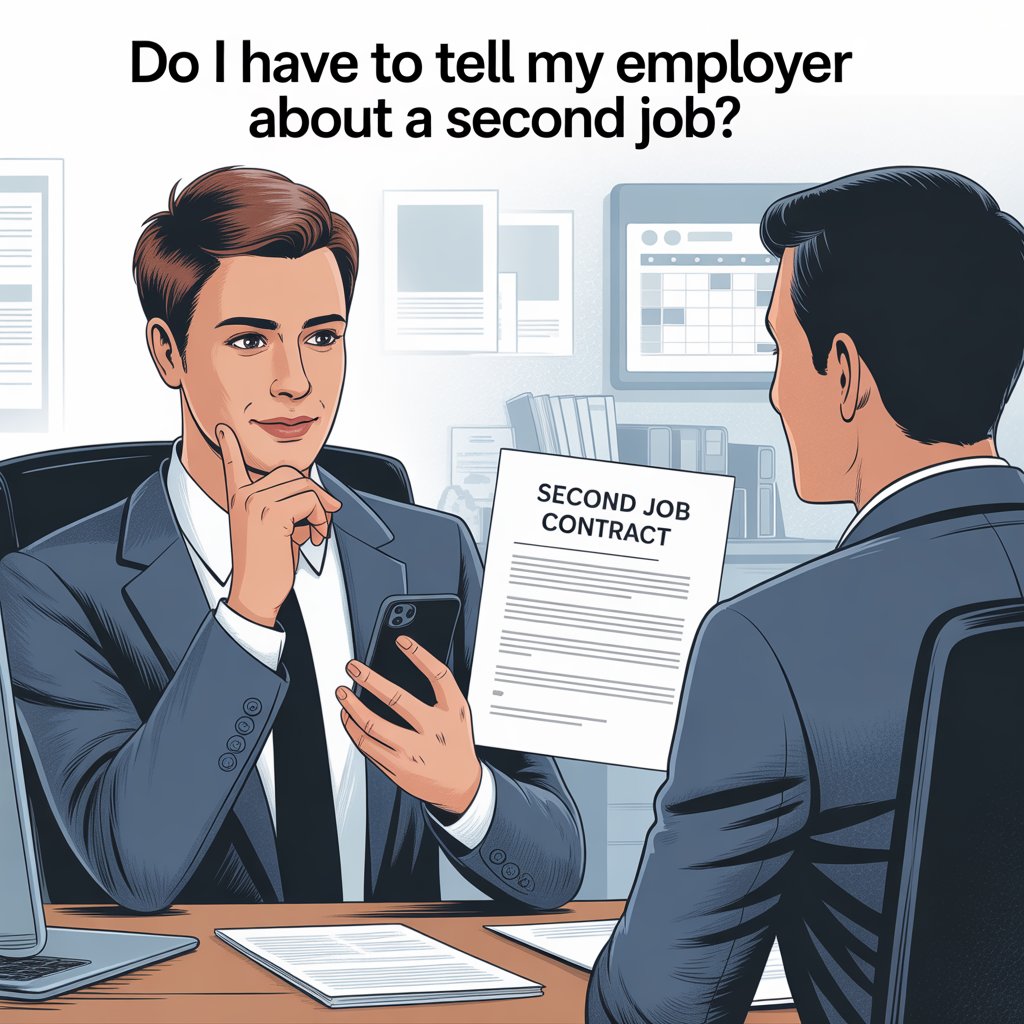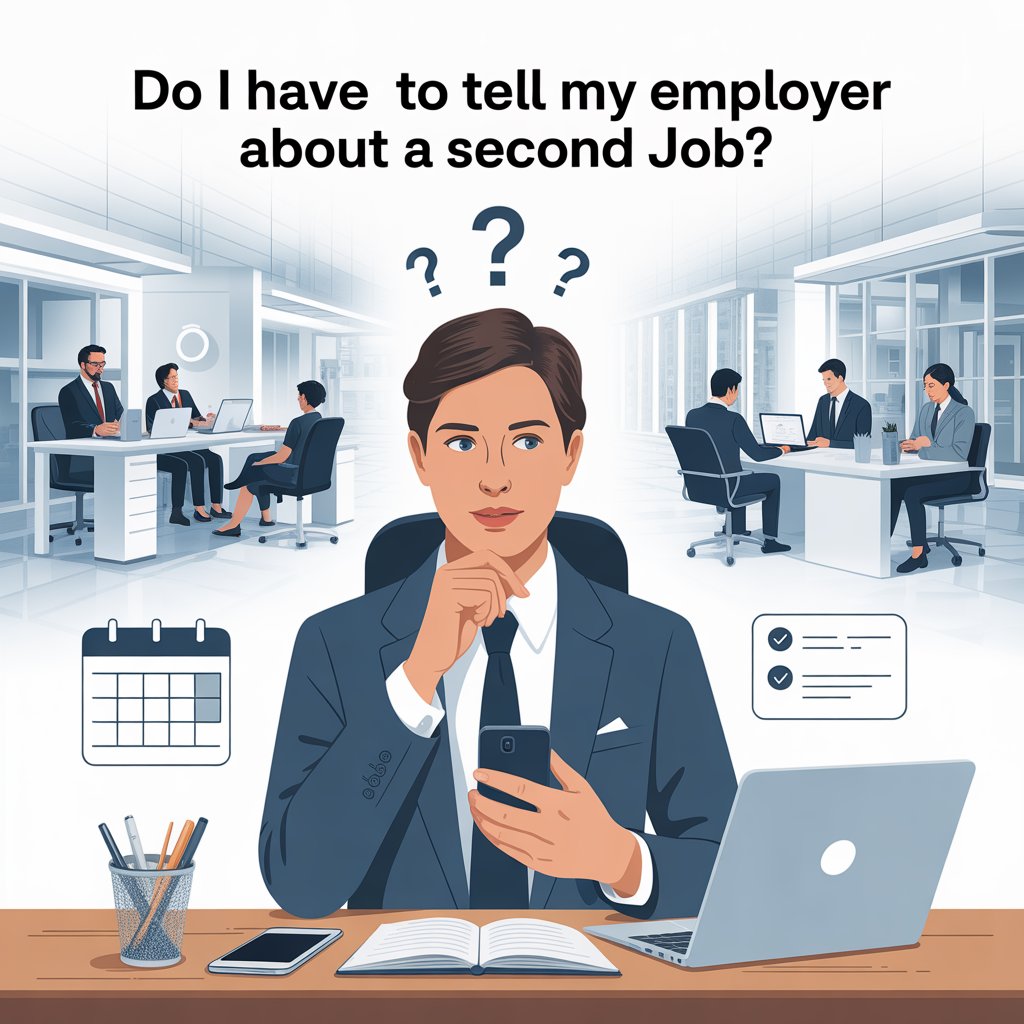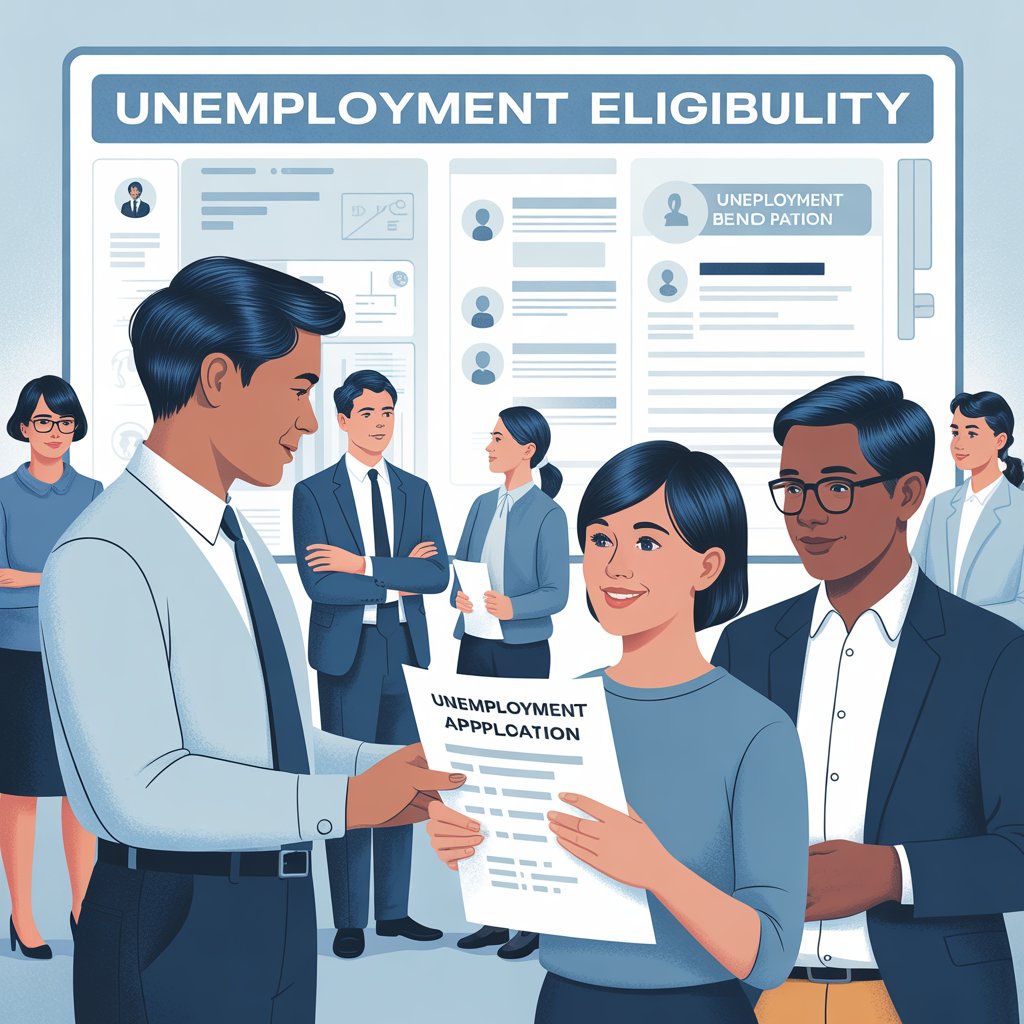When it comes to job applications, your cover letter can make or break your chances of landing an interview. It’s not just a formality; it’s your opportunity to show who you are and why you’re the best fit for the job. So, let’s talk about the essential cover letter qualities that can help your application shine and grab the attention of hiring managers.
Key Takeaways
- Personalize your letter by addressing the hiring manager directly.
- Keep your writing clear and to the point, avoiding unnecessary jargon.
- Follow professional formatting standards to ensure your letter looks polished.
- Start with a strong opening that grabs attention and states your intent clearly.
- Make sure to proofread your letter to eliminate any errors before sending.
Personalization That Resonates
It’s easy to send out a generic cover letter, but those rarely get a second look. To really grab attention, you need to show you’ve done your homework and care about this specific job at this specific company. It’s about making a connection, showing them you’re not just another applicant.
Addressing the Hiring Manager
Okay, let’s be real – "To Whom It May Concern" is a total cop-out. Dig around on LinkedIn or the company website to find the actual hiring manager’s name. It shows you’re willing to put in the extra effort. If you absolutely can’t find a name, try to at least address it to a specific department head. It’s a small thing that can make a big difference. This is a key part of cover letter personalization.
Using Specific Examples
Don’t just say you’re a hard worker or a team player. Everyone says that. Instead, give concrete examples of times you’ve demonstrated those qualities. Did you lead a project that saved the company money? Did you mentor a junior employee who went on to achieve great things? Quantify your achievements whenever possible. Numbers speak louder than adjectives. Think about how your relevant qualifications align with the job description.
Reflecting Company Values
Before you even start writing, spend some time researching the company’s mission statement and values. What are they passionate about? What kind of culture do they promote? Then, weave those values into your cover letter. Show them you understand what they stand for and that you share their vision. For example, if they emphasize innovation, talk about a time you came up with a creative solution to a problem. This shows you’re not just looking for a job; you’re looking for a place where you fit in. Make sure your cover letter header is properly formatted too.
Personalizing your cover letter isn’t just about adding a name; it’s about demonstrating that you understand the company, the role, and how your skills and experience align with their needs. It’s about showing them you’re not just qualified, but also a great fit for their team.
Clarity and Conciseness
Avoiding Jargon Overload
It’s easy to fall into the trap of using industry-specific terms, but resist the urge. Your cover letter should be understandable to anyone who might read it, even if they aren’t experts in the field. Using too much jargon can make you sound pretentious or, worse, like you’re trying to hide a lack of real understanding. Aim for plain language that clearly communicates your skills and experience. Think about it: the person initially screening your application might be in HR, not necessarily a technical expert.
Keeping Sentences Short
Long, winding sentences can confuse the reader and obscure your message. Keep your sentences concise and to the point. Short sentences are easier to understand and make your writing more impactful. Break up complex ideas into smaller, more manageable chunks. This will help the hiring manager quickly grasp your qualifications and interest. Here’s a quick guide:
- Aim for one main idea per sentence.
- Use active voice to make your writing more direct.
- Avoid unnecessary clauses and phrases.
Focusing on Key Points
Your cover letter should highlight the most relevant information for the specific job you’re applying for. Don’t try to cram everything you’ve ever done into one page. Instead, carefully select the skills and experiences that directly address the job requirements. This shows you’ve taken the time to understand what the employer is looking for and that you’re a good fit for the role. To ensure your letter is effective, consider these points:
- Prioritize the most important qualifications.
- Quantify your achievements whenever possible.
- Tailor your message to each application. cover letter tips
A concise cover letter demonstrates respect for the reader’s time and attention. It shows that you can communicate effectively and prioritize information, which are valuable skills in any workplace. Make every word count.
Remember, the goal is to make a strong impression quickly. By focusing on clarity and conciseness, you can ensure that your cover letter stands out for all the right reasons. Make sure to proofread for spelling and formatting errors.
Professional Formatting Standards
It’s easy to overlook the importance of how your cover letter looks, but trust me, it matters. A sloppy, hard-to-read cover letter is going straight into the trash. Think of it as your first impression – you want to show you’re detail-oriented and professional right from the start. Let’s break down the key elements.
Using Appropriate Margins
Don’t crowd your text! Give your words some breathing room with appropriate margins. Aim for at least one inch on all sides. This makes the letter easier on the eyes and prevents it from looking cramped. It’s a simple thing, but it makes a big difference in the overall presentation. Think of it like framing a picture – the right frame enhances the artwork, and the right margins enhance your words. This is part of cover letter format.
Choosing Readable Fonts
Forget fancy fonts! Stick to something clean and easy to read, like Times New Roman, Arial, or Calibri. Font size should be between 10 and 12 points. The goal is readability, not artistic expression. You want the hiring manager to focus on what you’re saying, not struggle to decipher your font choice. A good font choice shows respect for the reader’s time and attention. Here’s a quick guide:
- Classic Choices: Times New Roman, Arial, Calibri
- Modern Options: Helvetica, Garamond
- Avoid: Anything script-like or overly decorative
Maintaining Consistent Layout
Consistency is key. Use the same font and font size throughout the entire letter. Keep your spacing consistent between paragraphs. A well-organized layout shows that you pay attention to detail and take pride in your work. It also makes the letter easier to scan, which is important because hiring managers often have limited time. Think of it as building a house – a solid foundation and consistent structure are essential for a lasting impression.
A consistent layout isn’t just about aesthetics; it’s about conveying professionalism and attention to detail. It shows you care about how your message is received and that you’re capable of producing polished, professional documents.
Strong Opening Statements
Your cover letter’s opening is prime real estate. It’s your first, and possibly only, chance to grab the hiring manager’s attention. A weak start can lead to your application being overlooked, while a strong one can set you apart from the competition. Let’s explore how to make those first few sentences count.
Capturing Attention Immediately
Start with a compelling hook that showcases your understanding of the company’s needs or a significant achievement that aligns with the job requirements. Generic greetings are a no-go. Instead, try something like, "Having followed [Company Name]’s innovative work in [Industry Area] for years, I was excited to see the opening for a [Job Title], where I believe my skills in [Specific Skill] can contribute to your continued success."
- Use a relevant statistic or fact about the company.
- Share a brief, impactful anecdote related to the role.
- Reference a recent company achievement or initiative.
Stating Your Intent Clearly
Don’t beat around the bush. Clearly state the position you’re applying for and why you’re a good fit. This shows you’ve done your research and are serious about the opportunity. For example, "I am writing to express my keen interest in the [Job Title] position advertised on [Platform]. My background in [Relevant Field] and proven ability to [Key Skill] make me a strong candidate to excel in this role."
A clear statement of intent not only saves the reader time but also demonstrates your professionalism and directness. It sets the stage for the rest of your cover letter, making it easier for the hiring manager to understand your qualifications and how they align with the job requirements.
Highlighting Relevant Experience
Briefly mention your most relevant experience and skills that directly address the job description. This isn’t the time for a full resume recap, but rather a teaser to pique the reader’s interest. Consider this: "With five years of experience in [Industry], including successful projects in [Specific Area], I am confident in my ability to contribute to [Company Name]’s goals in [Related Objective]." Think of it as your elevator pitch – concise, impactful, and tailored to the audience. You want to show them, right away, that you’ve got the relevant experience they’re looking for.
- Quantify your achievements whenever possible (e.g., "Increased sales by 20% in one quarter").
- Focus on the skills and experiences most relevant to the job description.
- Use action verbs to describe your accomplishments (e.g., "Managed," "Developed," "Implemented").
Demonstrating Enthusiasm
It’s easy to fall into the trap of writing a cover letter that sounds like everyone else’s. But showing genuine enthusiasm can really set you apart. It tells the hiring manager you’re not just looking for any job, but this job. It’s about more than just saying you’re excited; it’s about showing it through your words and tone.
Expressing Genuine Interest
To show you’re really interested, do your homework. Don’t just say you admire the company; explain why. What specific projects or initiatives caught your eye? How does their mission align with your own values? This level of detail shows you’ve taken the time to understand what the company is about. It’s way more effective than generic praise. Think about it – if you were hiring, wouldn’t you want someone who’s genuinely excited about the work?
Using Positive Language
Your word choice matters. Instead of saying "I can do this," try "I’m eager to contribute my skills to this." Instead of "I have experience in," try "I’m passionate about applying my experience in." See the difference? It’s subtle, but it adds up. Positive language makes a positive impression and shows you’re approaching the opportunity with a can-do attitude. It’s about framing your qualifications in a way that highlights your excitement and willingness to learn.
Conveying Passion for the Role
This is where you really let your personality shine. What specifically about the role excites you? Is it the chance to solve a particular problem? The opportunity to work with a certain technology? The ability to contribute to a specific goal? Whatever it is, make it clear. And don’t be afraid to show a little excitement. A cover letter isn’t just a list of qualifications; it’s a chance to express enthusiasm and gratitude and show the hiring manager why you’re the right fit.
Think of your cover letter as a conversation starter. You’re not just reciting your resume; you’re telling a story about why you’re excited about this opportunity and how you can contribute to the company’s success.
Tailored Content for Each Application
It’s easy to fall into the trap of using the same cover letter for every job application. I get it, it saves time. But trust me, taking the time to tailor your content can make a huge difference. Think of it this way: you wouldn’t wear the same outfit to a business meeting and a casual get-together, right? Same principle applies here. A generic cover letter is like showing up in sweatpants – it just doesn’t make the right impression.
Researching the Company
Before you even start writing, do your homework. I mean, really dig in. Check out the company’s website, read their latest news, and see what they’re saying on social media. Understand their mission, their values, and their goals. This isn’t just about knowing what they do, but why they do it. Knowing this will help you speak their language and show that you’re genuinely interested in being a part of their team.
Aligning Skills with Job Requirements
Okay, you’ve done your research. Now, carefully review the job description. What skills and experiences are they specifically looking for? Don’t just list your skills; connect them directly to the job requirements. Use examples from your past experiences to show how you’ve used those skills to achieve results. It’s about making it clear to the hiring manager that you’re not just qualified, but you’re the ideal candidate. Think of it as solving a puzzle – you’re showing them how your skills fit perfectly into their needs. For example, if the job description mentions "project management experience," you might say:
"In my previous role at Tech Solutions, I successfully managed three major projects simultaneously, aligning skills with job requirements resulting in a 15% increase in efficiency and on-time project delivery."
Customizing Your Message
Now, bring it all together. Use what you’ve learned about the company and the job requirements to craft a message that speaks directly to them. Avoid generic statements and focus on what makes you a unique fit for this specific role at this specific company. Show them that you understand their challenges and that you have the skills and passion to help them succeed. It’s about making a personal connection and showing them that you’re not just looking for any job, but you’re looking for this job.
"I am particularly drawn to your company’s commitment to innovation in the tech industry, as demonstrated by your recent work in AI development. My background in machine learning and data analysis aligns perfectly with your goals, and I am confident that I can make a significant contribution to your team."
Error-Free Presentation
It’s easy to overlook the importance of a polished, error-free cover letter. However, even minor mistakes can create a negative impression and undermine your qualifications. Think of your cover letter as a representation of your attention to detail and professionalism. A flawless presentation demonstrates respect for the hiring manager and the company. It shows you care enough to put in the extra effort to ensure your application is perfect.
Proofreading for Spelling Mistakes
Spelling errors are a common pitfall. It’s easy to rely on spell check, but it won’t catch everything. Homophones (words that sound alike but have different meanings) are a frequent source of errors. For example, confusing "there," "their," and "they’re" can make your writing look sloppy. Always manually proofread your cover letter, paying close attention to these types of words. It’s also helpful to read your letter aloud, which can help you identify awkward phrasing and grammatical errors that you might otherwise miss. Don’t let common mistakes ruin your chances.
Ensuring Correct Formatting
Formatting errors can be just as distracting as spelling mistakes. Consistency is key. Use the same font throughout your cover letter and resume. Make sure your margins are consistent and that your paragraphs are properly aligned. Pay attention to spacing, both between lines and between paragraphs. A well-formatted cover letter is easy to read and visually appealing. It shows that you understand professional formatting standards and can present information in a clear and organized manner.
Double-Checking Contact Information
It sounds obvious, but it’s crucial to double-check your contact information. Make sure your phone number and email address are correct. There’s nothing more frustrating for a hiring manager than trying to contact a candidate only to find that the information is wrong. Also, ensure that the contact information of the hiring manager is correct. A simple mistake in their name or title can be embarrassing and create a negative impression. Always verify this information before submitting your application.
A final check before submitting your cover letter is always a good idea. Ask a friend or family member to review it for any errors you might have missed. A fresh pair of eyes can often catch mistakes that you’ve overlooked. This extra step can make a big difference in the overall quality of your application.
Effective Closing Techniques
Reiterating Your Interest
Your closing is your last chance to make an impression. Don’t be shy about restating your enthusiasm for the position. Briefly mention what excites you most about the opportunity. This shows the hiring manager that your interest is genuine and that you’ve thought seriously about how you’d fit into the role. It’s a simple way to reinforce your commitment and leave them with a positive feeling about your application. Make sure to tailor this to the specific job you are applying for.
Encouraging Follow-Up
Make it easy for the employer to take the next step. Instead of passively waiting, suggest a follow-up action. This could be something like, "I welcome the opportunity to discuss my qualifications further in an interview" or "I look forward to hearing from you regarding the next steps in the hiring process." This shows initiative and confidence. It also subtly prompts the hiring manager to move your application forward. Don’t be pushy, but do be proactive. Following up is key.
Thanking the Reader
Always end your cover letter with a sincere expression of gratitude. Thank the reader for their time and consideration. This is a basic courtesy that demonstrates professionalism and respect. A simple "Thank you for your time and consideration" goes a long way. It leaves a positive final impression and reinforces your good manners. It’s a small gesture, but it can make a big difference.
A well-crafted closing can significantly increase your chances of landing an interview. It’s your final opportunity to showcase your enthusiasm, professionalism, and genuine interest in the position. Make it count!
Showcasing Relevant Skills
It’s not enough to just list your skills; you need to show how they directly relate to the job you’re applying for. Think of your cover letter as a bridge connecting your abilities to the employer’s needs. Let’s break down how to do this effectively.
Highlighting Transferable Skills
Even if your past roles don’t perfectly align with the new position, you likely have transferable skills. These are abilities that can be applied across different jobs and industries. Identify these skills and explain how they’ll benefit the new employer. For example, strong communication skills are always valuable, regardless of the specific role.
Using Action Verbs
Instead of passively stating your skills, use action verbs to demonstrate what you’ve accomplished. For example, instead of saying "Experienced in project management," say "Managed cross-functional projects, aligning skills with job requirements resulting in on-time delivery and within-budget completion." Action verbs make your skills sound more dynamic and impactful.
Providing Quantifiable Achievements
Whenever possible, quantify your achievements. Numbers speak louder than words. Consider these points:
- Increased sales by 15% in the last quarter.
- Reduced customer complaints by 20% through improved service strategies.
- Streamlined processes, saving the company $10,000 annually.
By providing concrete data, you demonstrate the real-world impact of your skills. This makes your claims more credible and shows the employer that you’re results-oriented. It’s about showing, not just telling, what you can bring to the table.
Building a Narrative
Telling Your Career Story
Think of your cover letter as a short movie trailer for your professional life. It’s not just about listing jobs; it’s about showing how you got where you are. What were the key moments? What challenges did you overcome? A well-told story makes you memorable. Consider starting with a brief overview of your career journey, highlighting pivotal roles and experiences that have shaped your skills and aspirations. This approach helps the reader understand your trajectory and see you as more than just a list of qualifications.
Connecting Past Experiences to Future Goals
It’s not enough to simply recount your past; you need to show how it connects to your future, specifically the role you’re applying for. How do your previous experiences prepare you for the challenges and opportunities of this new position? Make those connections clear and explicit. For example, if you led a team in a previous role, explain how that experience has equipped you to lead effectively in this new context. This demonstrates foresight and a clear understanding of your career path. Think about how storytelling in a cover letter can help you achieve this.
Creating a Cohesive Message
Your cover letter should read like a single, unified argument for why you’re the perfect fit for the job. Avoid disjointed statements or random lists of skills. Instead, weave together your experiences, skills, and aspirations into a cohesive narrative that supports your application. This means carefully selecting the information you include and presenting it in a logical, compelling order. Consider using a theme or motif to tie everything together, such as a particular skill or value that runs throughout your career. Remember, even with short cover letters, you can still create a cohesive message.
A cohesive message is key. It shows you’ve thought deeply about your career and how this role fits into your overall plan. It’s not just about getting a job; it’s about taking the next step in your professional journey.
Utilizing Industry Language
It’s important to show you’re not just generally skilled, but that you understand the specific field you’re applying to. Using the right language helps you connect with the hiring manager and demonstrate your knowledge. It shows you’ve done your homework and are serious about the role. Let’s explore how to do this effectively.
Incorporating Relevant Terminology
Using industry-specific terms shows you’re familiar with the field. It’s about speaking the same language as the people you’ll be working with. For example, if you’re applying for a marketing role, using terms like "SEO," "content marketing," or "conversion rates" demonstrates your understanding of current practices. This is a great way to show your relevant skills.
Demonstrating Knowledge of the Field
It’s not enough to just throw around buzzwords. You need to show you understand how these terms apply in a practical setting. If you mention "agile methodologies," be prepared to explain how you’ve used them in past projects. This shows you’re not just reciting terms, but that you have a working knowledge of the industry. This is a great way to make your application stand out.
Engaging with Current Trends
Stay up-to-date with the latest news and developments in your industry. Mentioning current trends in your cover letter shows you’re proactive and engaged. For example, if you’re applying for a tech job, you might mention your interest in the latest advancements in AI or machine learning. This demonstrates that you’re not just looking for a job, but that you’re passionate about the field.
Using industry language isn’t about showing off; it’s about demonstrating your understanding and passion for the field. It helps you connect with the hiring manager and shows you’re a serious candidate.
Visual Appeal and Readability
Let’s be real, nobody wants to read a cover letter that looks like it was typed on a typewriter from the 1950s. How your cover letter looks matters just as much as what it says. If it’s hard to read, it won’t get read. Period.
Using Bullet Points for Clarity
Bullet points are your friends. Use them to break up big blocks of text and make your accomplishments easy to spot. Think of it as giving the hiring manager a roadmap to your awesomeness. Instead of burying your skills in paragraphs, list them out. It’s cleaner, faster, and way more effective. For example, instead of writing a paragraph about your project management skills, try this:
- Managed cross-functional teams of 5-7 members.
- Delivered projects on time and under budget.
- Implemented agile methodologies to improve efficiency.
Incorporating White Space
Don’t cram everything onto one page. White space is crucial. It gives the reader’s eyes a break and makes the document look less intimidating. Think of it like this: a cluttered desk is a cluttered mind. The same goes for your cover letter. Use margins, paragraph breaks, and spacing to create a visually appealing cover letter. It makes a huge difference.
Ensuring Easy Navigation
Make it easy for the hiring manager to find what they’re looking for. Use clear headings and subheadings. Highlight key skills and achievements. The goal is to guide them through your qualifications effortlessly. Think of your cover letter as a website – you want the user experience to be smooth and intuitive. A simple, modern font is key to cover letter readability.
When it comes to making your content look good and easy to read, you need to pay attention to both style and layout. A clean design with clear fonts can help grab attention and keep readers interested. If you want to learn more about how to improve your content’s visual appeal, visit our website today!
Wrapping It Up
In the end, a great cover letter can really make a difference in your job hunt. It’s your chance to show who you are beyond your resume. Remember to keep it clear and focused, and don’t forget to personalize it for each job. Highlight your skills and experiences that match what the employer is looking for. And always proofread to avoid any mistakes. A well-crafted cover letter can grab attention and give you a better shot at landing that interview. So take your time, put in the effort, and let your personality shine through!
Frequently Asked Questions
What is a cover letter?
A cover letter is a document you send with your resume when applying for a job. It explains why you are a good fit for the position.
How long should my cover letter be?
Your cover letter should be one page long. Keep it clear and to the point.
Do I need to customize my cover letter for each job?
Yes, you should tailor your cover letter for each job you apply for. This shows that you are genuinely interested in the position.
What should I include in the opening of my cover letter?
Start with a strong opening that grabs attention. Mention the job you are applying for and why you are excited about it.
Is it important to proofread my cover letter?
Absolutely! You should check for spelling and grammar mistakes. A clean, error-free letter looks more professional.
How should I format my cover letter?
Use standard formatting: set margins to 1.5 inches, choose a simple font, and keep everything neat and organized.
What tone should I use in my cover letter?
Your tone should be professional yet friendly. Show enthusiasm for the job while remaining respectful.
How do I close my cover letter?
In your closing, thank the reader for their time, express your interest in the position, and mention that you look forward to hearing back.










